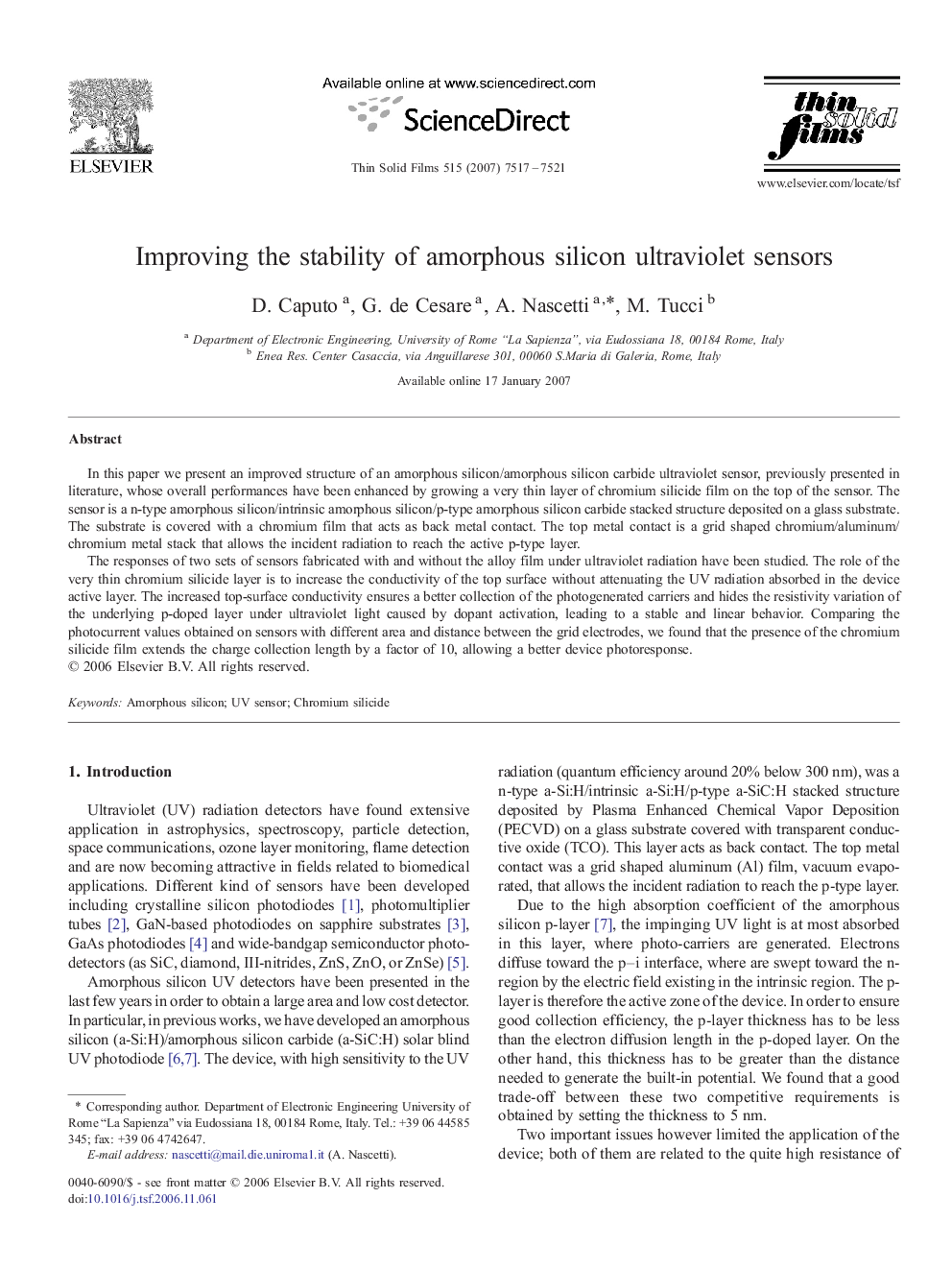| Article ID | Journal | Published Year | Pages | File Type |
|---|---|---|---|---|
| 1674532 | Thin Solid Films | 2007 | 5 Pages |
In this paper we present an improved structure of an amorphous silicon/amorphous silicon carbide ultraviolet sensor, previously presented in literature, whose overall performances have been enhanced by growing a very thin layer of chromium silicide film on the top of the sensor. The sensor is a n-type amorphous silicon/intrinsic amorphous silicon/p-type amorphous silicon carbide stacked structure deposited on a glass substrate. The substrate is covered with a chromium film that acts as back metal contact. The top metal contact is a grid shaped chromium/aluminum/chromium metal stack that allows the incident radiation to reach the active p-type layer.The responses of two sets of sensors fabricated with and without the alloy film under ultraviolet radiation have been studied. The role of the very thin chromium silicide layer is to increase the conductivity of the top surface without attenuating the UV radiation absorbed in the device active layer. The increased top-surface conductivity ensures a better collection of the photogenerated carriers and hides the resistivity variation of the underlying p-doped layer under ultraviolet light caused by dopant activation, leading to a stable and linear behavior. Comparing the photocurrent values obtained on sensors with different area and distance between the grid electrodes, we found that the presence of the chromium silicide film extends the charge collection length by a factor of 10, allowing a better device photoresponse.
